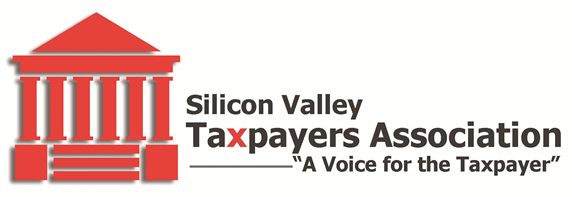-
-
-
Elections
-
-
-
-
-
-
-
-
-
-
-
-
-
-
-
-
-
-
-
-
-
-
-
-
Santa Clara County $548 million parcel tax approved [SJ Mercury News, 11/7/12]
-
-
-
-
-
-
-
-
-
-
-
-
-
-
-
-
-
-
-
-
-
San Jose Mercury News
Santa Clara County $548 million parcel tax for flood protection, water cleanup and projects approvedby Paul Rogers
November 7, 2012
This article is also available at the Web site of San Jose Mercury News, here.
Santa Clara County voters passed a $548 million parcel tax to fund flood control, environmental cleanup and other water projects at the Santa Clara Valley Water District.
With almost half of precincts reporting by midnight Tuesday, more than 72 percent of voters favored Measure B. It needs two-thirds of all votes to pass.
The ballot measure is an extension of an existing parcel tax for another 15 years that was first passed 12 years ago. That tax currently provides about 12 percent of the district's $285 million annual budget.
Dubbed the "Safe, Clean Water and Natural Flood Protection Program" by the water district, Measure B is designed to continue the parcel tax -- $56 a year for the average home -- through 2028, increasing at 3 percent a year to about $87 per home, rather than expiring in 2016.
The largest funding measure on the Nov. 6 ballot in Santa Clara County, Measure B had a prominent list of supporters. Among them: the Silicon Valley Leadership Group, the South Bay Labor Council, Save the Bay, the San Jose Silicon Valley Chamber of Commerce, San Jose Mayor Chuck Reed and U.S. Rep. Mike Honda, D-San Jose.
Supporters said the first parcel tax, approved by voters in 2000 at $39 per home, has provided important benefits to Silicon Valley, including flood control, new trails and restored wetlands, trash removal along creeks and improved drinking water quality.
But Measure B faced several hurdles.
First, it needed a two-thirds majority for passage. When it passed the first time, during a better economy, it won by less than 1 percentage point.
Second, it drew unwelcome attention and ridicule in some quarters when water district officials submitted paperwork this summer to county elections officials with two words more than the law allowed, and also included the wrong date -- errors that were eventually fixed, but for a while threatened to derail the entire measure.
Then there has been the matter of the district's spending. During the past decade, the water district, a government agency based in San Jose that provides flood control and drinking water to 1.8 million people, has been the subject of seven critical grand jury reports. The reports cited project delays, high salaries and questionable spending, such as the district board's decision in 2008 to spend $1.4 million building a gazebo and "outdoor education center" on a vacant lot in Alviso at the urging of board member Richard Santos, who grew up in Alviso.
The district has doubled water rates in the past decade, yet San Jose remains the largest city in the nation without fluoridated water. And six of the agency's 10 dams can't be filled to the top because they need earthquake repairs.
The district also has nearly 30 top managers who earn between $150,000 and $230,000 a year and are provided full medical and dental benefits, car allowances, life insurance, 28 vacation days, 7 days of personal leave and 12 paid holidays at public expense.
Opponents, including the Silicon Valley Taxpayers' Association, said the district needed to curb its spending rather than asking the public for more money.
Some environmentalists also refused to endorse the measure, including the Loma Prieta chapter of the Sierra Club. Their concern was that the district moved $16 million in funding earmarked in the original tax for fish restoration and other conservation work into reserves that may be used to pay for flood control projects instead. Two environmentalists, Richard McMurtry of Environmentalists for Living Streams, and Lawrence Johmann of Western Waters Canoe Club, wrote the ballot language in opposition to Measure B, saying the district needed to go back and write an environmentally stronger measure for the 2014 or 2016 ballot.
The district's leaders said significant reforms have taken place under new CEO Beau Goldie, including reducing the number of jobs from 853 to 746, limiting practices such as paying employees for accumulated sick leave, and better oversight of projects. Also, three new board members elected in 2010 -- Linda LeZotte, Brian Schmidt and Don Gage -- have worked to make changes.
Audits have found that the original tax has achieved most of its goals, including opening nearly 70 miles of creekside trails, restoring more than 500 acres of tidal marsh and wetlands, and removing thousands of tons of sediment and non-native vegetation that was reducing the flood-carrying capacity of local streams. But the district fell short in one key area: It set a goal of protecting 16,000 homes and other parcels from floods, but is on pace for only 9,500 by 2016 because it overestimated the federal funding that was going to be available.
Paul Rogers covers resources and environmental issues. Contact him at 408-920-5045. Follow him at Twitter.com/PaulRogersSJMN
